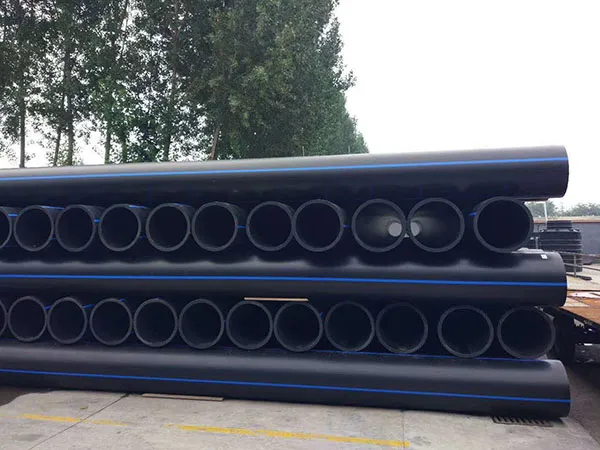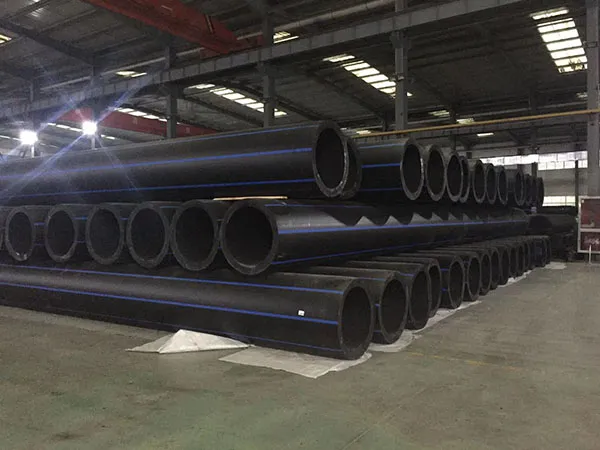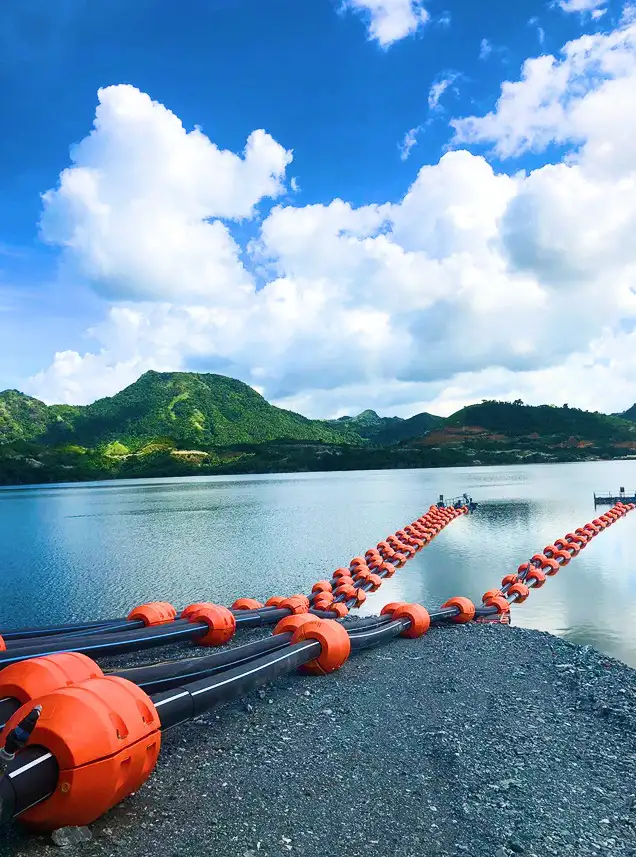Time: 2025-08-06 08:03:51 Source: Max Pipe
High-Density Polyethylene (HDPE) pipes are a type of plastic piping made from thermoplastic polymer known for its high strength-to-density ratio. Widely used in water supply, gas distribution, sewage systems, industrial applications, and irrigation, HDPE pipes are valued for their durability, flexibility, and resistance to corrosion and chemicals.High-Density Polyethylene (HDPE) pipes are widely used in various applications due to their unique set of specifications and material properties.

High Strength-to-Density Ratio: HDPE has a linear molecular structure that allows its molecules to pack tightly, resulting in a high strength-to-density ratio. This makes it both lightweight and incredibly durable.
Density: The density of HDPE typically ranges from 0.93 to 0.97 g/cm³.
Durability and Resistance:
Corrosion Resistance: HDPE is highly resistant to chemicals, acids, bases, solvents, detergents, and most common corrosive substances, making it ideal for various fluid transfer applications.
Impact Resistance: It exhibits excellent impact strength, allowing it to withstand mechanical shocks and external forces without breaking.
Abrasion Resistance: HDPE is resistant to abrasion, making it suitable for transporting slurries and other abrasive materials.
Environmental Stress Crack Resistance (ESCR): Specific grades like PE100-RC (Resistance to Cracking) offer enhanced resistance to slow crack growth, making them suitable for more demanding installation conditions like trenchless methods.
UV Resistance: HDPE pipes are often formulated with UV stabilizers (e.g., carbon black) to resist degradation from direct sunlight, providing a long service life in outdoor applications.
Resistance to Microbial Growth: It does not support microbial growth, making it suitable for potable water applications.
Flexibility: HDPE pipes are highly flexible, allowing them to bend under stress without cracking. This flexibility makes them suitable for dynamic systems, trenchless installation methods, and regions prone to seismic activity or shifting soil. They can often be coiled in smaller diameters (up to 110mm OD) for easier transport and installation.
Temperature Resistance:
Melting Point: The melting point of HDPE is around 130-135°C (266-275°F).
Service Temperature: HDPE pipes can generally operate effectively within a temperature range of -40°C to 60°C (-40°F to 140°F), though pressure ratings may need to be de-rated at higher temperatures.
Low Friction Coefficient: The smooth interior surface of HDPE pipes reduces resistance to fluid flow, improving hydraulic efficiency and potentially leading to energy savings.
Low Moisture Absorption: HDPE exhibits minimal water absorption (typically <0.10%), preventing swelling and maintaining integrity in moist environments.
Recyclability: HDPE is a highly recyclable material, often identified by the "2" resin identification code.
HDPE pipe specifications are typically defined by:
Nominal Diameter (ND) or Outside Diameter (OD): HDPE pipes are available in a wide range of sizes, from small diameters (e.g., 20mm or 1/2 inch for domestic plumbing) to medium (e.g., 200-500mm for municipal water) and large diameters (e.g., over 1600mm for large-scale transmission). Sizes are measured in millimeters (metric) or inches (imperial), and can be designated as IPS (Iron Pipe Size), CTS (Copper Tubing Size), DIPS (Ductile Iron Pipe Size), or SIDR (Standard Inside Diameter Ratio).
Standard Dimension Ratio (SDR) or Dimension Ratio (DR): SDR is a critical specification that defines the ratio of the pipe's outside diameter to its minimum wall thickness. A lower SDR value indicates a thicker wall and thus a higher pressure rating. For example:
SDR 7.3: High pressure (e.g., 317 psi or 23.1 bar for PE4710)
SDR 9: High pressure (e.g., 250 psi or 17.2 bar)
SDR 11: Moderate to high pressure (e.g., 200 psi or 13.8 bar)
SDR 13.5: Moderate pressure (e.g., 160 psi or 11 bar)
SDR 17: Lower pressure (e.g., 125 psi or 8.6 bar)
Pressure Nominal (PN) or Pressure Class (PC): This indicates the maximum pressure in bars the pipe can withstand with water at 20°C (68°F). Common PN ratings include PN 2.5, PN 4, PN 6, PN 8, PN 10, PN 12.5, PN 16, PN 20, PN 25, and PN 32. Higher PN values signify greater pressure resistance.
Material Grade: HDPE pipes are often classified by the material used, such as:
PE100: Minimum Required Strength (MRS) of 10.0 MPa (1450 psi), offering long-term strength and creep resistance. Used for high-demand applications.
PE80: MRS of 8.0 MPa.
PE63, PE40, PE32: Used for lower pressure applications.
PE4710: A newer grade of polyethylene with improved stress crack resistance and higher pressure capabilities compared to older grades like PE3408.

HDPE pipes are manufactured according to various international and national standards to ensure quality and performance. Some common standards include:
AWWA C901: Polyethylene (PE) pressure pipe and tubing, ½ inch through 3 inch, for water.
AWWA C906: Polyethylene (PE) pressure pipe and fittings, 4 inch through 63 inch, for water.
ASTM D3035: Standard specification for PE pipe (DR-PR) based on controlled outside diameter.
ASTM F714: Standard specification for PE pipe (SDR-PR) based on controlled outside diameter.
ASTM D3261: Standard specification for butt fusion polyethylene (PE) plastic fittings for polyethylene (PE) plastic pipe and tubing.
ISO 13479: Specifies a test method for determining the resistance to slow crack growth of polyethylene pipes.
ISO 527-2: Specifies the tensile properties of plastics.
ISO 1183: Specifies methods for determining the density of non-cellular plastics.
Co-extruded pipes: Some HDPE pipes have additional layers, such as a barrier layer for contaminated ground (to protect potable water) or a harder outer layer (e.g., polypropylene) for enhanced protection during trenchless installation.
Color coding: HDPE pipes are sometimes color-coded to indicate their application or pressure grade (e.g., yellow for gas, blue for potable water).
Joining Methods: HDPE pipes can be joined using various methods, including butt welding, electrofusion welding, and push-fit sockets, creating leak-proof connections.
These specifications collectively ensure that HDPE pipes are reliable, durable, and suitable for a wide range of fluid transfer applications, from water and gas distribution to industrial and mining pipelines.
